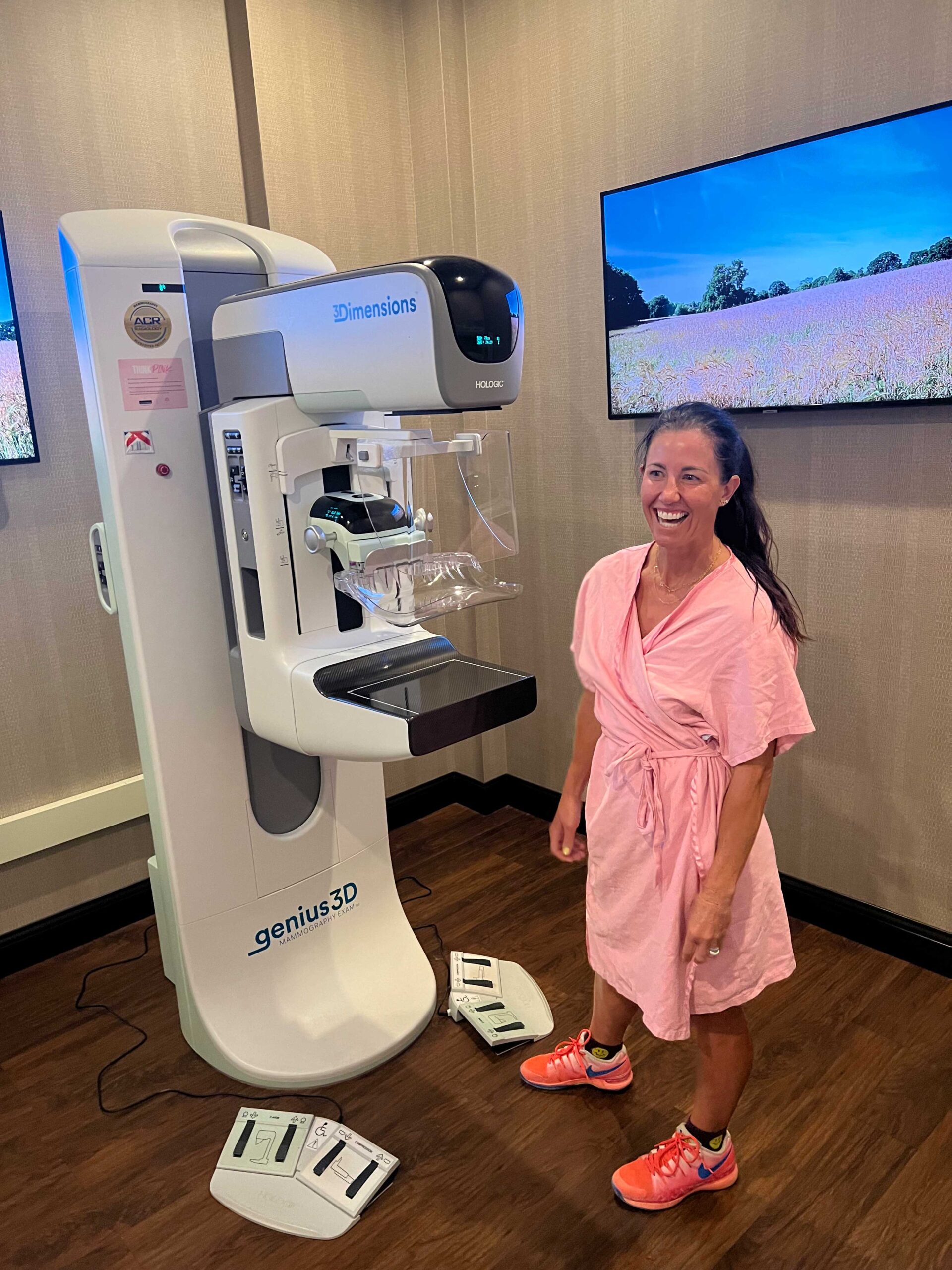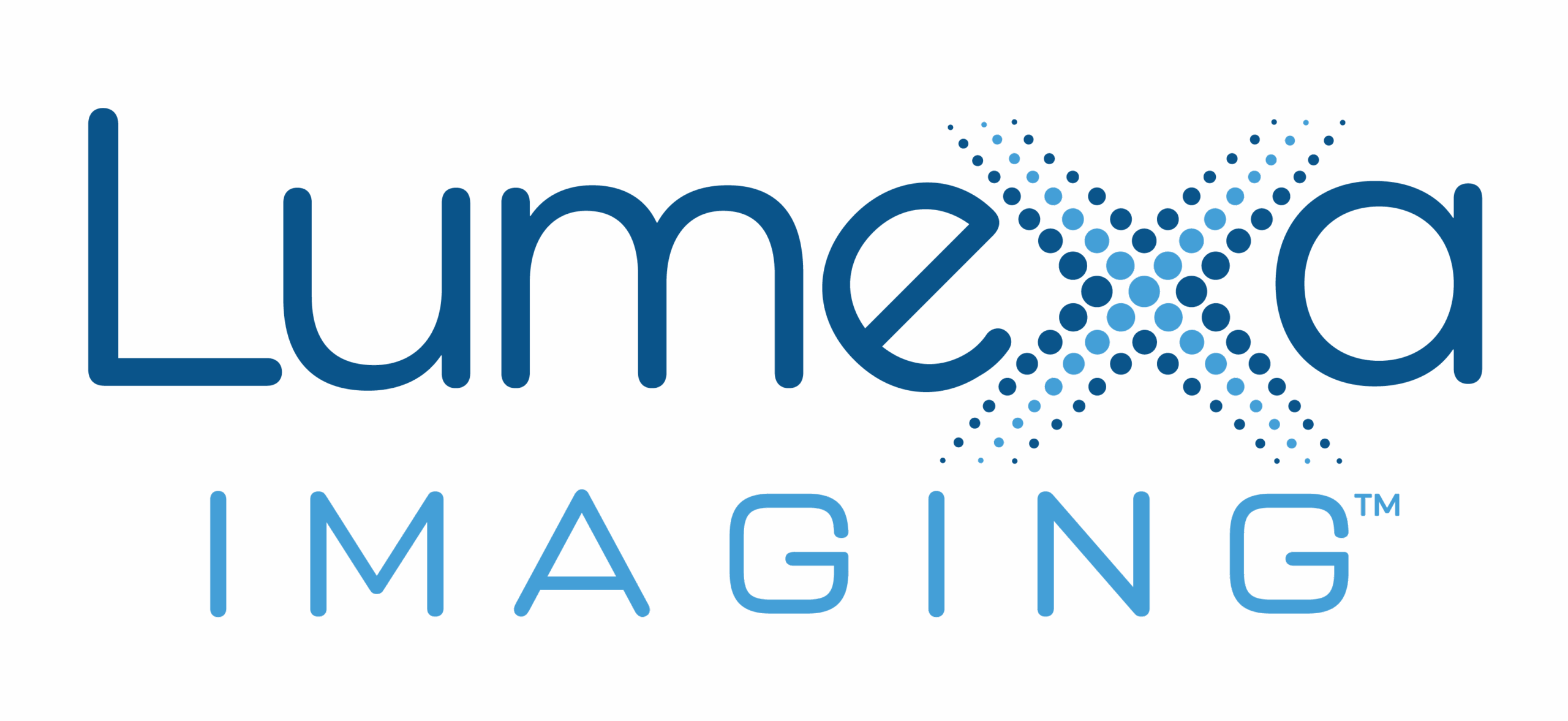As a mom of four, a busy entrepreneur, and a lifestyle content creator with tens of thousands of followers, Emily Breeze Watson is used to putting others first. But turning 40 made her realize it was time to prioritize her own health, starting with her first mammogram.
Highlighting the value of her voice and the reach of her platform, Emily recognized the significance of prioritizing an annual screening mammogram.
“My reason for getting a mammogram at age 40 was to empower women,” Emily says. “Most of my followers are women, so I wanted to empower them with the knowledge that early detection saves lives. And I have three little girls and want to model healthy habits for them. I love to exercise, and I eat healthy food. Getting a mammogram was another way to model healthy choices for women and girls.”
For women at average risk for breast cancer like Emily, the National Comprehensive Cancer Network and other expert organizations recommend having the first annual screening mammogram at age 40.
Understanding and following your screening timeline, which is based mostly on your level of breast cancer risk, can help radiologists find the disease long before you can feel a lump or see changes to the breast tissue. Early detection significantly increases your chances of survival.
Read More: Breast Cancer Stages and the Importance of Early Detection
Family Ties
Family and food are central to Emily’s life. In addition to creating lifestyle content for social media, she partners with her husband, William, to oversee social media strategy for more than 20 businesses and brands. The couple also owns fast-casual restaurants in the Greater Charlotte Area.
“We love exploring our city and others through food and socializing at restaurants,” Emily says. “Most of the time, though, you’ll find me at a basketball court or ball field cheering on my kids.”
Her busy schedule doesn’t have many openings, but Emily knew an annual screening mammogram was too important to delay.
“My mom and grandmother had irregular breast screenings in the past, and their providers put them on a more frequent screening schedule,” Emily says. “They were eager for me to have my annual screening mammogram, given their history.”
Exceeding (and Relieving) Expectations

After researching mammogram providers online and asking friends for their opinions, Emily chose Charlotte Radiology, in part, because she thought she’d be most comfortable receiving care from a team of women who put her at ease and explained what to expect. That’s exactly what she found at Charlotte Radiology.
“Everything was so easy,” Emily says. “The all-woman technologist team was amazing and super inspiring for me. They were great about guiding me through the process and making me feel more in control. It can be easy to feel out of control, which leads to anxiety and stress. Everyone was so welcoming and inviting.”
Like many women, Emily was nervous about whether the mammogram would hurt.
“I feel like everyone talks about mammograms being painful or uncomfortable,” she says. “I felt uneasy and didn’t know what to expect.”
Emily was pleasantly surprised, though, at how unremarkable the compression felt.
“It wasn’t uncomfortable at all,” she says. “I breastfed four kids, and the mammogram compression wasn’t even close to the discomfort of breastfeeding. I felt pressure, but there was no pain.”
Emily was impressed with the seamlessness of the mammogram experience and the breast center’s welcoming atmosphere.
“I felt comfortable as soon as I walked in, which was nice,” she says. “Sometimes, a doctor’s office or clinic doesn’t feel inviting, but the breast center definitely was. The technologist led me through the entire process, and I felt confident she was an expert in the screening and knew what she was talking about and looking for. She helped me understand what I would feel and encounter.”
Emily says the technologist felt like an old friend. She even assured Emily that call backs for additional imaging are common but no cause for alarm. Fewer than 10% of patients who return for additional imaging end up receiving a cancer diagnosis, according to the American Cancer Society.
Read More: Diagnostic Mammogram: What to Expect When You Are Called Back
Knowledge Is Empowering
Fortunately, Emily’s results were normal, and she did not have to return for more tests.
“After the test, I felt empowered knowing I’d taken an important step for my breast health, and I also breathed a sigh of relief,” Emily says. “The annual screening mammogram is one of those things you hear about and know you should do, but as moms, we often don’t prioritize our health. It would have been easy to push off the test, but I felt so good I did it and now know what to expect. It was super smooth and easy. I look forward to going back every year and, hopefully, getting great results.”
In addition to containing the results she was hoping for, Emily’s mammogram report also included information she didn’t know about her breasts. She learned that, like almost half of women her age and older who get mammograms, she has dense breast tissue.
“After talking with my mom and grandmother, I learned they also have dense breasts,” Emily says. “The technologist told me plenty of people do, and that it’s not abnormal or something to worry about. That was another source of empowerment.”
Leading by Example
By getting her first annual screening mammogram on schedule, Emily laid the foundation for prioritizing her breast health for decades to come.
“For me, everything comes back to my daughters and being a role model for them,” Emily says. “I also want to show all the women who follow me on my social channels that taking a step to prioritize ourselves is beneficial and valuable in so many ways. Prioritizing our breast health means we can continue going to our kids’ sports games, continue being there for them, and be healthy, strong, and valuable to everyone around us.”



